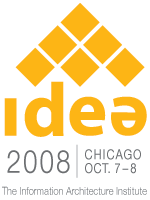First of all, I didn’t realize that Michael Wesch had a blog. Now that I’ve found it, I have a lot of back-reading to do.
But here’s a recent post on the subject of Context, as it relates to web-cams and YouTube-like expression. Digital Ethnography — Context Collapse
The problem is not lack of context. It is context collapse: an infinite number of contexts collapsing upon one another into that single moment of recording. The images, actions, and words captured by the lens at any moment can be transported to anywhere on the planet and preserved (the performer must assume) for all time. The little glass lens becomes the gateway to a blackhole sucking all of time and space – virtually all possible contexts – in upon itself.
By the way, I’m working on a talk on context for IDEA Conference. Are you registered yet?



